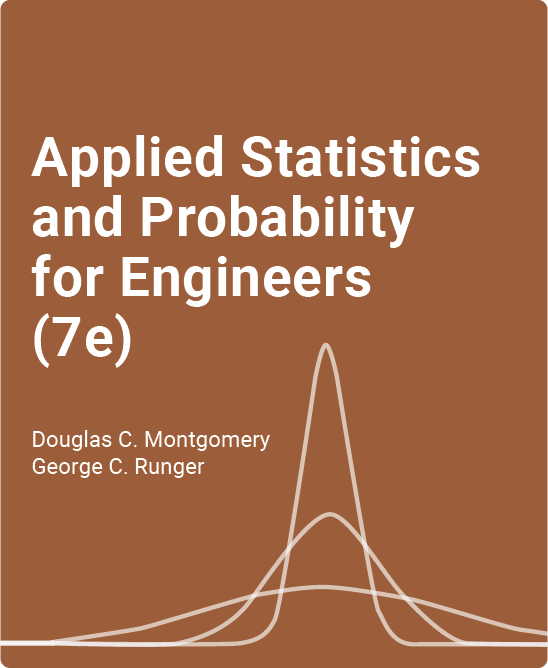Resources for Engineering Probability and Statistics
In November 2025, the zyBooks engineering team led a peer-to-peer workshop on Moving from Misconceptions to Intuition – Strategies for Teaching Probability & Statistics. This session covered common misconceptions (like equal probability bias and sample size misunderstandings) and research-backed strategies to address them; and hands-on activities and real-world applications that build intuitive understanding. The team curated the following resources to support both topics; we hope you find them helpful in your course.
I. Common Misconceptions
Research
Misconceptions / Concept Inventories:
- L. Khazanov, L. Prado, Correcting Student’s Misconceptions about Probability in an Introductory Statistics Course, Adult Learning Mathematics (ALM) International Journal, Vol. 5(1), Pages, pp. 22-35
- A. Stone, K. Allen, T. Reed Rhoads, T.J. Murphy, R.I. Shehab, C. Saha, The Statistics Concept Inventory: A pilot Study, 33rd ASEE/IEEE Frontiers in Education Conference, Nov. 5-8, 2003, Boulder, CO.
- Richardson, Jim. Concept inventories: Tools for uncovering STEM students’ misconceptions. Assessment and education research (2004): 19-26.
Problems to address Misconceptions:
Select end of chapter problems from Montgomery’s Applied Statistics and Probability for Engineers, 7e mapped to common misconceptions.
- Conjunctive/disjunctive: Exercise 2.7.11, 2.7.12
- Independence – Exercise 2.7.2, 2.7.3, 2.7.4, 9.8.1, 9.8.2
- Independence/correlation – Exercise 5.4.3, 5.4.7, 5.5.4
- Bayes theorem – Exercise 2.7.1
- Bayes theorem/Base rate – Exercise 2.8.3, 2.8.4
- Hypothesis testing / p-value – Exercise 9.1.1, 9.1.11, 9.2.6, 9.2.7, 9.2.9, 9.3.8, 9.3.10, 9.5.3
Note: End of chapter problems from Applied Statistics and Probability for Engineers, 7e are available in the zyBook. They are in the section called “Exercises” at the end of each chapter.
zyBook Resources:
Here is a selected list of zyBook Participation Activities from Montgomery’s Applied Statistics and Probability for Engineers, 7e mapped to common misconceptions.
Participation Activities in a zyBook are animations and learning questions that are an integral part of the expository content for each chapter. Here is an example of how they appear:

- Conditional probability and random sampling: PA 2.5.3
- Conditional probability: PAs 2.5.1, 5.2.1
- Identifying independent events: PA 2.7.2
- Conjunctive / disjunctive: PA 2.7.3 (and Examples 2.7.3, 2.7.4)
- Bayes’ theorem and applications: PAs 2.8.1, 2.8.2
- Independence and conditional probability: PA 5.2.2
- Correlation, covariance, and independence: PA 5.4.1
- Hypothesis testing type I and II: PA 9.1.1
- p-value, alpha, and “value” of the underlying result: PAs 9.1.5, 9.1,6
II. Engaged Students Learn Better
Research:
- E.J. Theobald, M.J. Hill, E. Tran, S. Agrawal, E.N. Arroyo, S. Behling, N. Chambwe, D.L. Cintrón, J.D. Cooper, G. Dunster, J.A. Grummer, K. Hennessey, J. Hsiao, N. Iranon, L. Jones, H. Jordt, M. Keller, M.E. Lacey, C.E. Littlefield, A. Lowe, S. Newman, V. Okolo, S. Olroyd, B.R. Peecook, S.B. Pickett, D.L. Slager, I.W. Caviedes-Solis, K.E. Stanchak, V. Sundaravardan, C. Valdebenito, C.R. Williams, K. Zinsli, & S. Freeman, Active learning narrows achievement gaps for underrepresented students in undergraduate science, technology, engineering, and math, Proc. Natl. Acad. Sci. U.S.A. 117 (12) 6476-6483,
- S. Freeman, S.L. Eddy, M. McDonough, M.K. Smith, N. Okoroafor, H. Jordt, & M.P. Wenderoth, Active learning increases student performance in science, engineering, and mathematics, Proc. Natl. Acad. Sci. U.S.A. 111 (23) 8410-8415,
- L. Deslauriers, L.S. McCarty, K. Miller, K. Callaghan, & G. Kestin, Measuring actual learning versus feeling of learning in response to being actively engaged in the classroom, Proc. Natl. Acad. Sci. U.S.A. 116 (39) 19251-19257, (2019).
- Phys. Rev. ST Phys. Educ. Res. 8, 020104 – Published 31 July, 2012 DOI: https://doi.org/10.1103/PhysRevSTPER.8.020104
- Joel Michael Where’s the evidence that active learning works? Advan in Physiol Edu 30:159-167, 2006.
- Dickson, B. A., Woolford, D. G., Samuels, B., & Kotsopoulos, D. (2025). Active Learning in Post-Secondary Statistics and Data Sciences Teaching: Lesson-Level Moments and Course-Level Alternative Models. Journal of Statistics and Data Science Education, 1–16.
- Louis Deslauriers et al., Improved Learning in a Large-Enrollment Physics Class.Science332,862-864(2011).DOI:10.1126/science.1201783
- Welter, Jenny, et al. Student Performance Improvement in a Circuit Analysis Course when Interactive Web-Native Textbook Activities are Assigned for Points. 2025 ASEE Annual Conference & Exposition. 2025.
For more on zyBooks research, visit here:
https://www.zybooks.com/research_tags/engineering-research
Ways to Engage Students
Clicker questions and board questions:
- MIT OpenCourseware: Full course content including clicker questions and board questions
- most recent: ocw.mit.edu
- previous: opencw.aprende.org
- 3D printer files for dice:
Extended student exercises:
- UT Austin: Introductory Statistics: Analyzing Data with Purpose: extended student exercises
- Central Michigan University: Promoting Active Learning in Introductory Statistics Course Using the PACE Strateg
- Rossman, Chance – CalPoly: rossmanchance.com
Experimenting to answer a question:
- American Statistical Association: https://www.amstat.org/docs/default-source/amstat-documents/exploringprojects.pdf
Using Misconceptions to Engage Students in Learning:
- Clickers to identify misconceptions in real time (just in time instruction)
- In class experiments – coin flipping to address representativeness bias
- Make students confront real scenarios
- Find errors
- Analyze real data or design methods of collecting data
Research:
- K. Cline, H. Zullo, D.A. Huckaby, Addressing common errors and misconceptions in integral calculus with clickers and classroom voting, Teaching Mathematics and Its Applications, vol. 39, pp. 71-85, July 2019.
- L. Khazanov, L. Prado, Correcting Students’ Misconceptions about Probability in an Introductory College Statistics Course, ALM International Journal, vol 5, iss. 1, pp. 23-35, 2010
- A.L.Rossman, B. L. Chance Anticipating and Addressing Student Misconceptions ARTIST Roundtable Conference on Assessment in Statistics. Lawrence University, August 1-4, 2004






